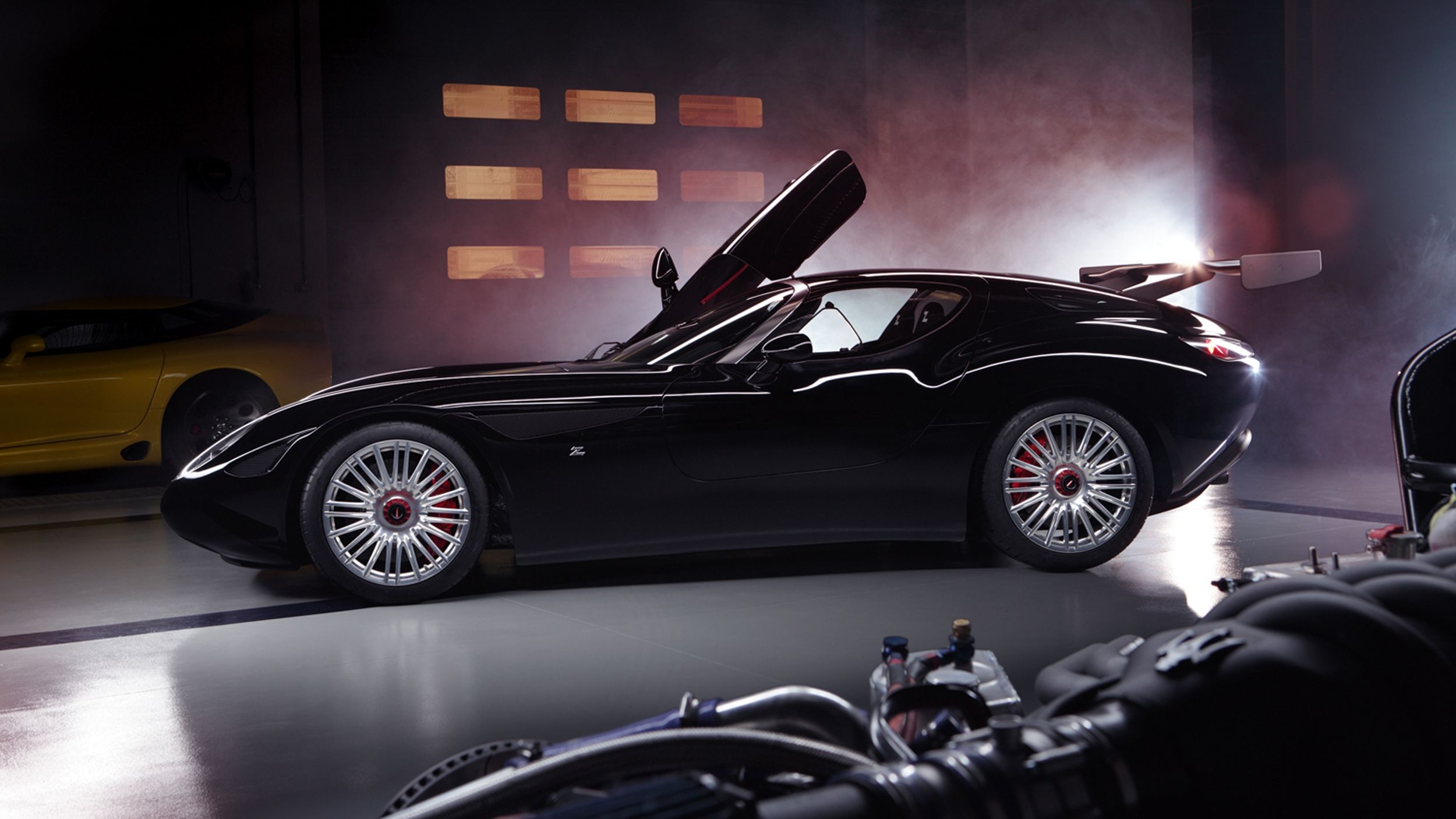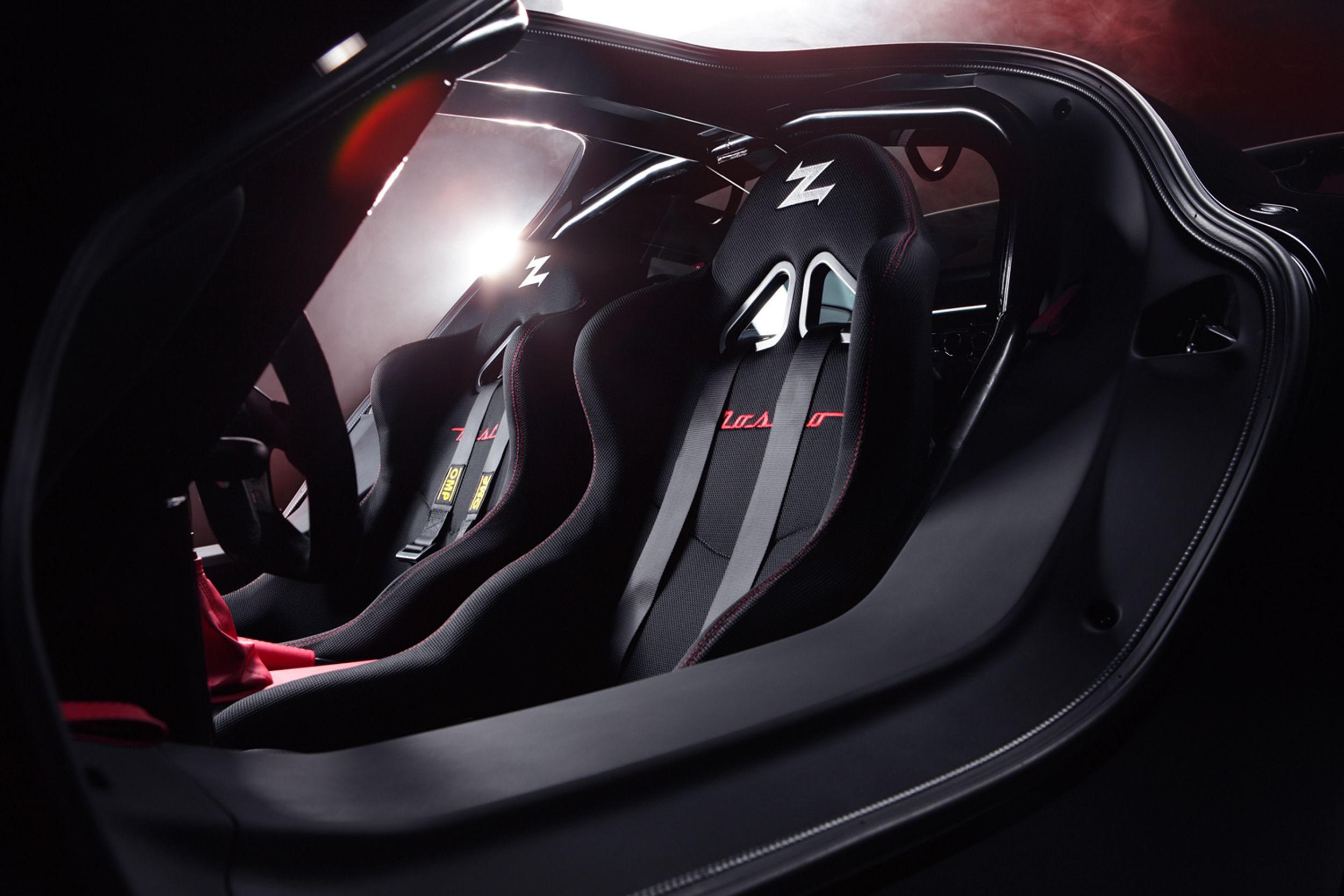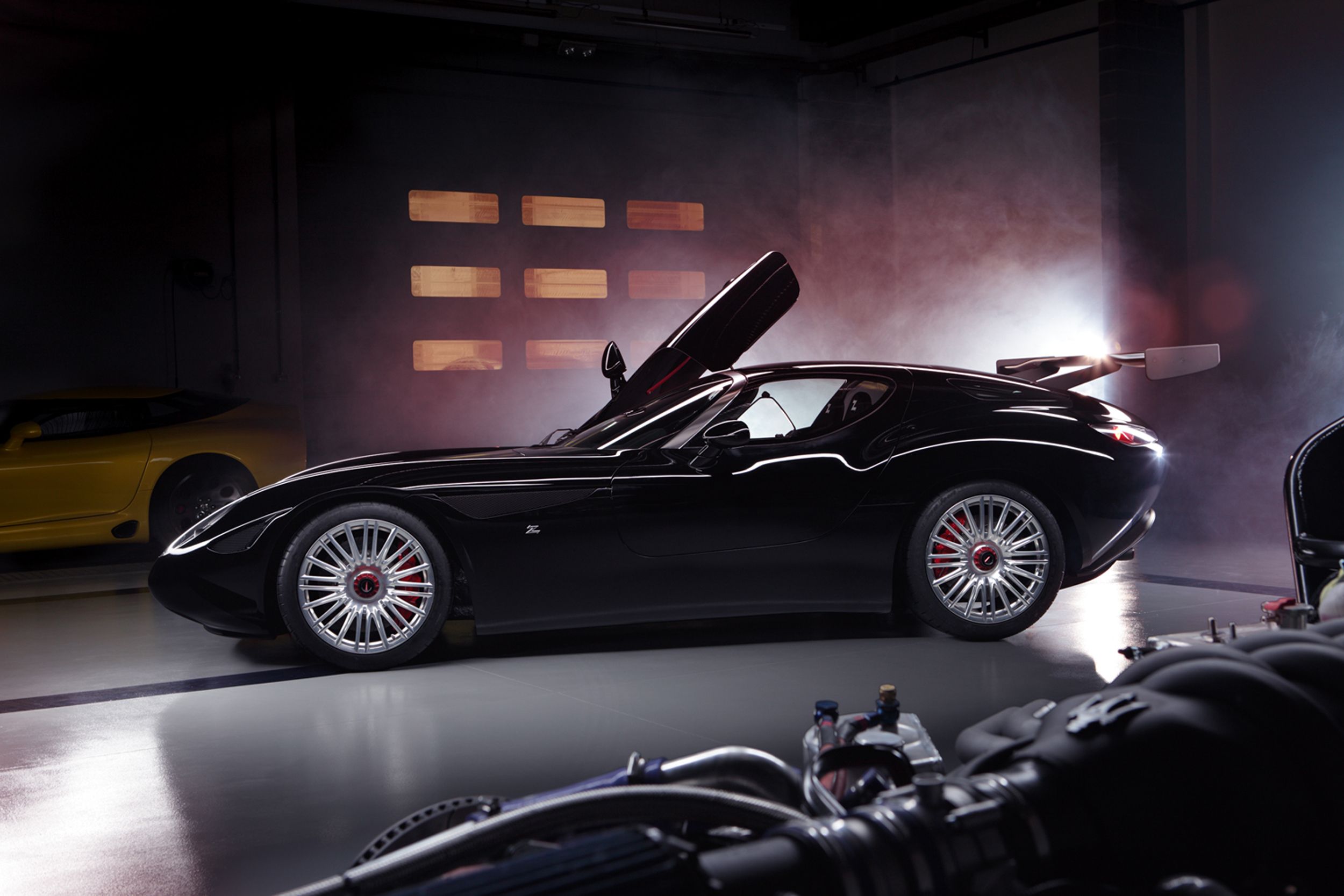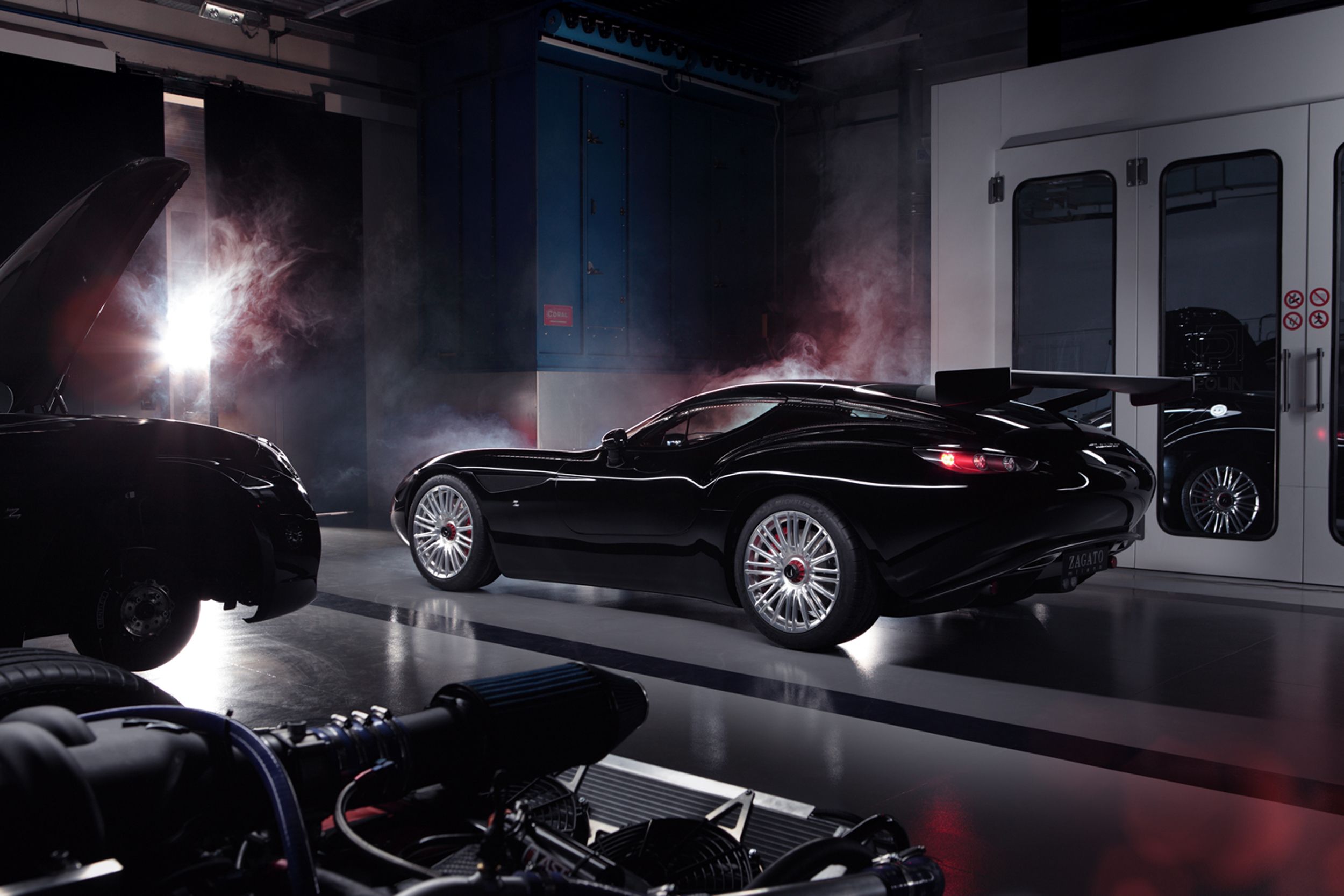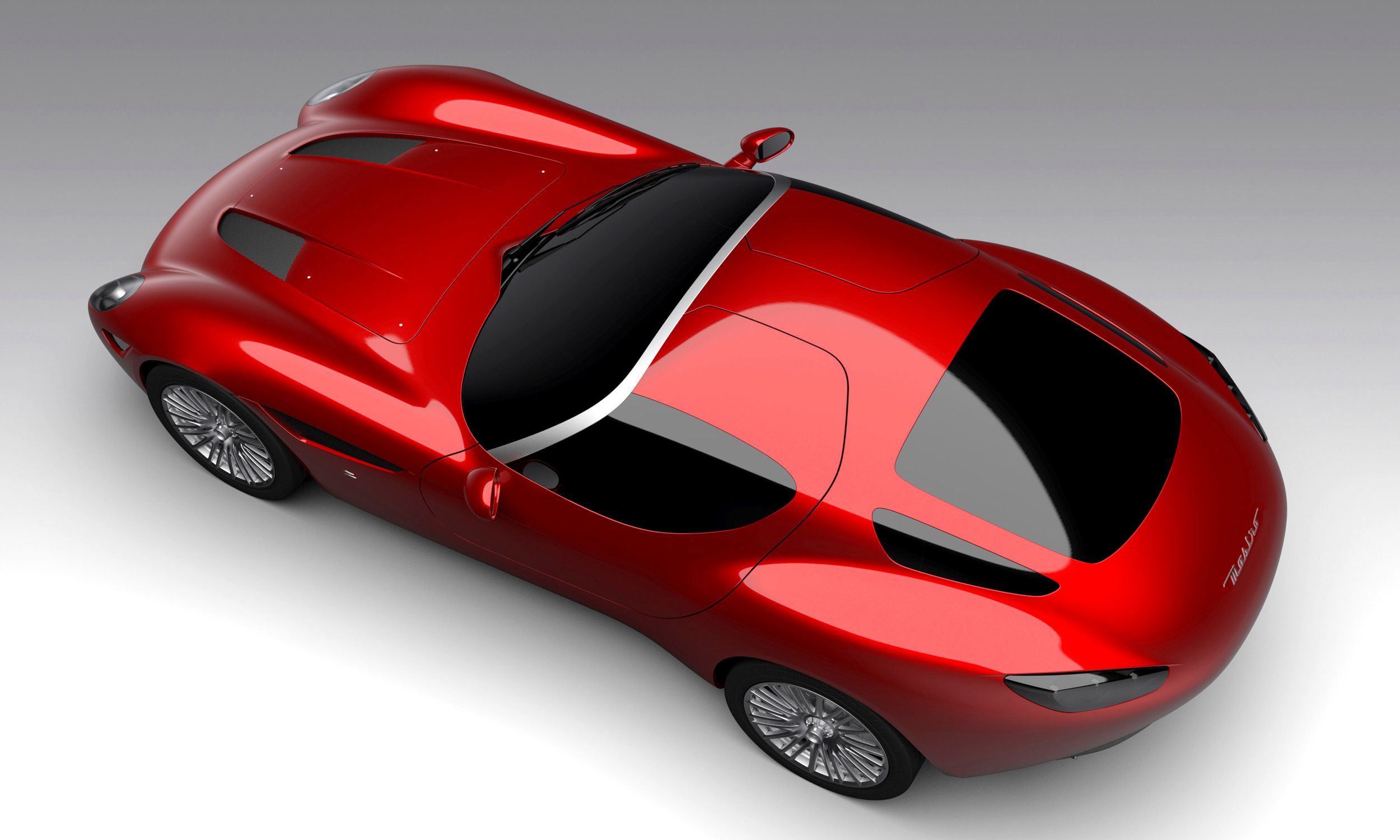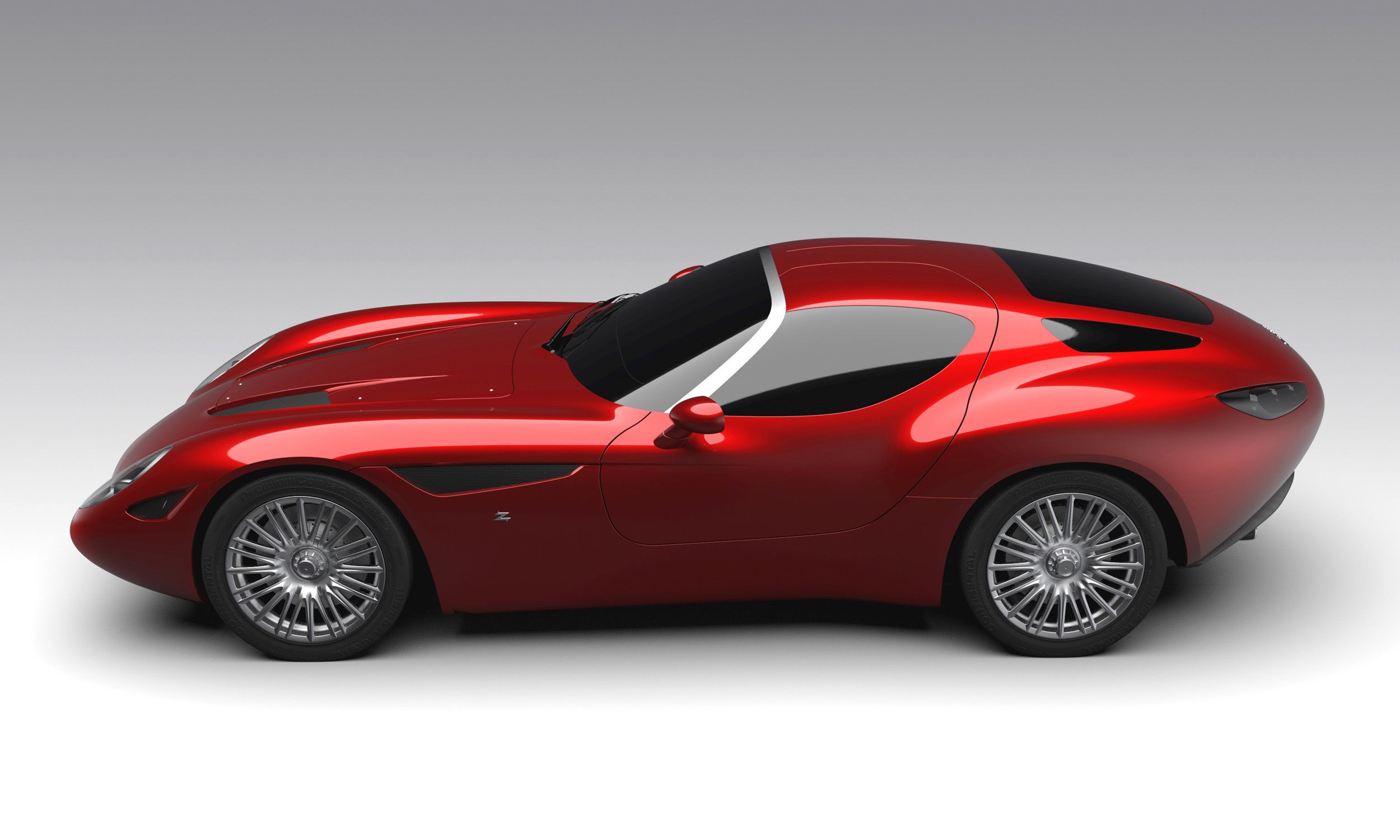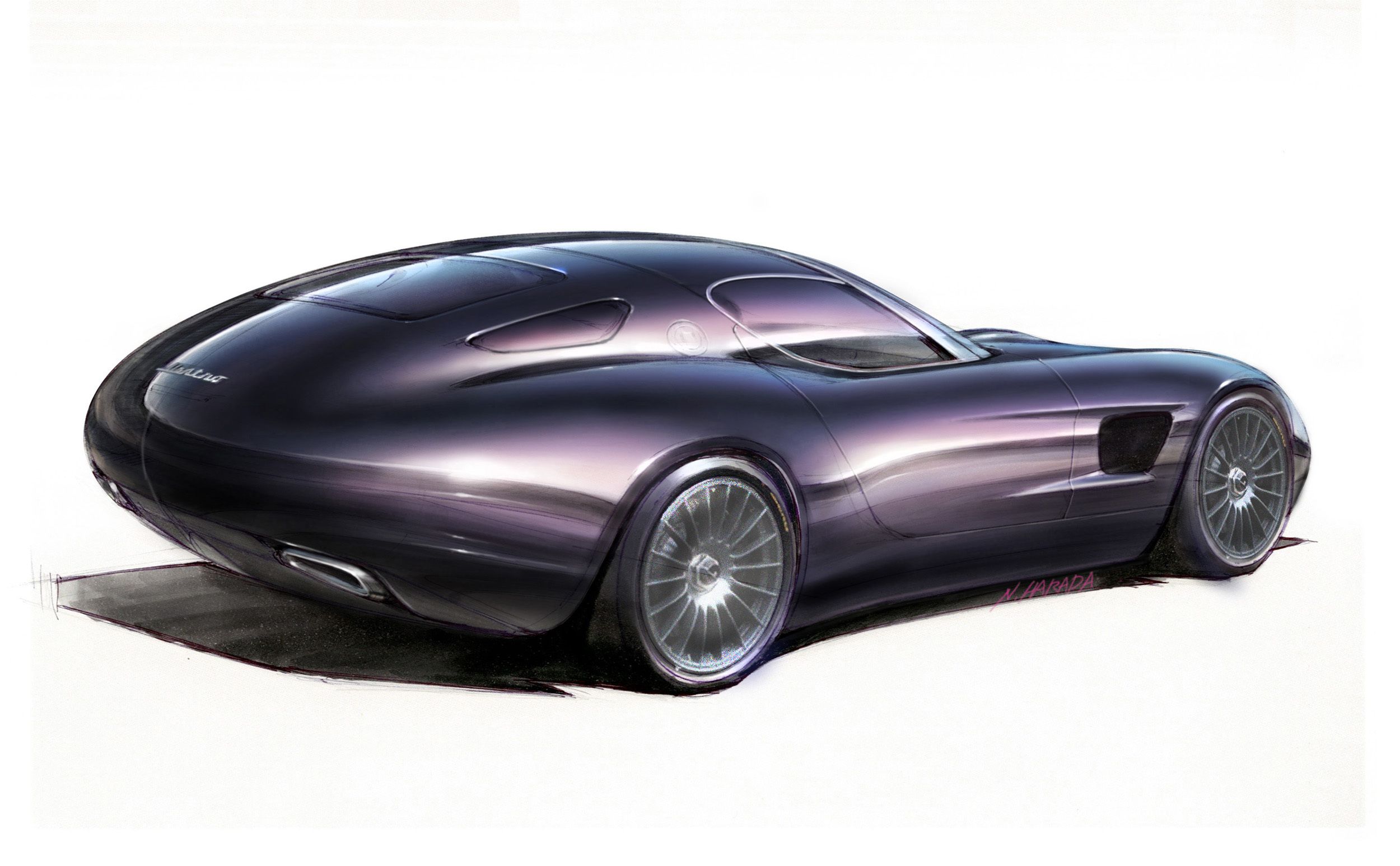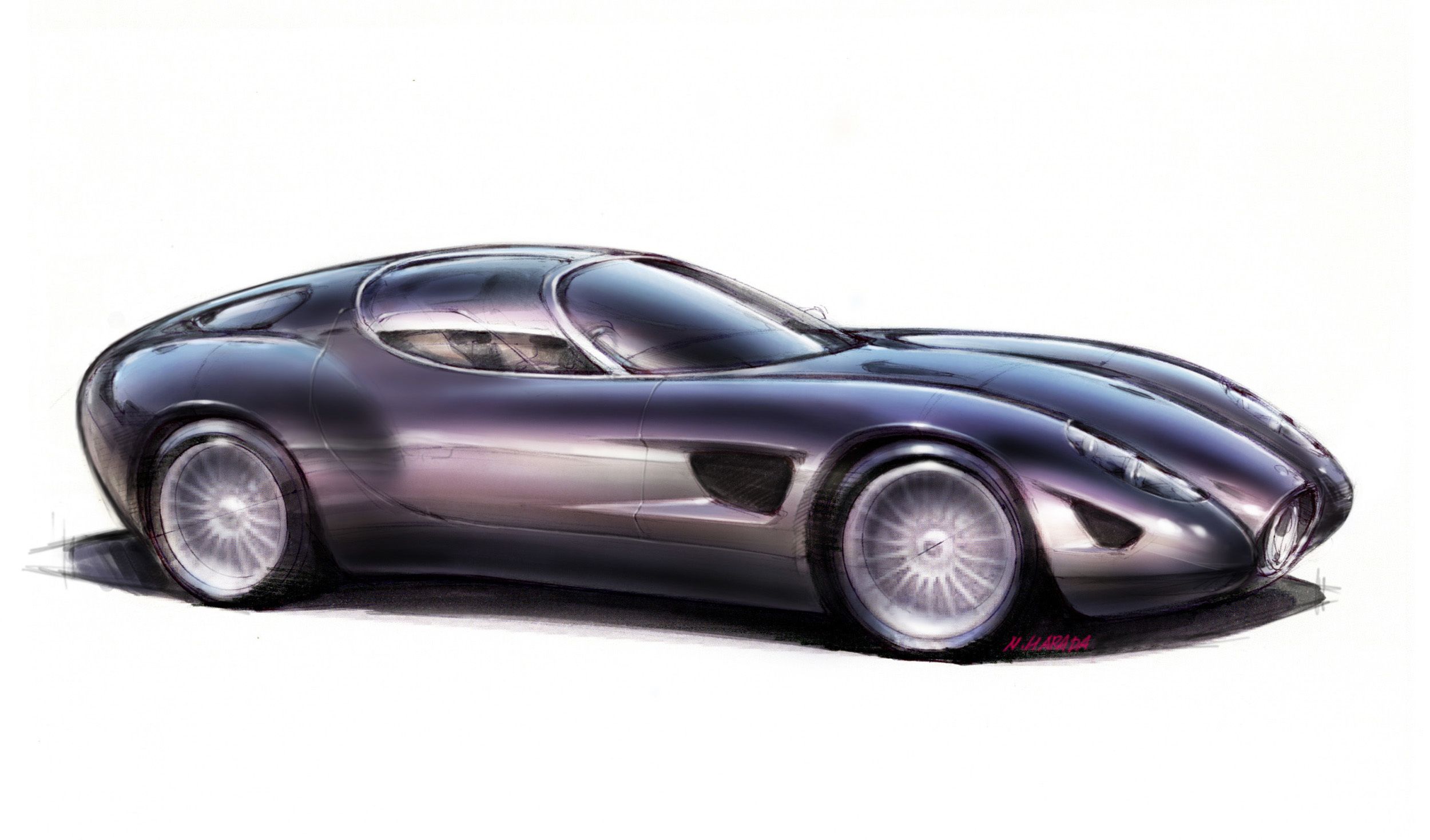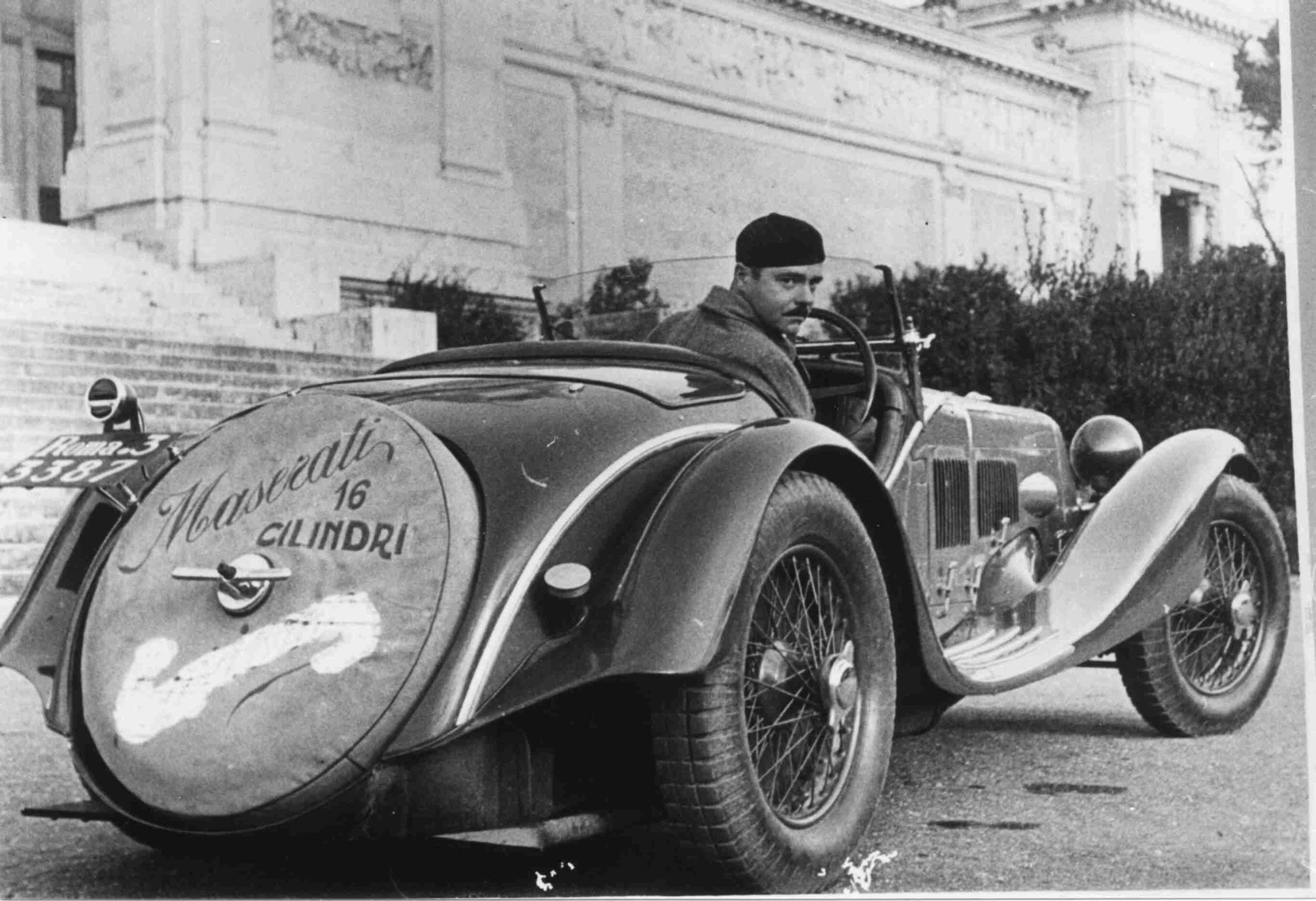Italian coachbuilder Zagato->ke3827 may design fewer automobiles than it used to back in the day, but that's not to say its creations are less impressive. And we have the Maserati Monstro as proof, which the Italians are planning to reveal at the 2015 Concorso d'Eleganza Villa d'Este->ke2163 this summer.
The coachbuilt custom, which will hit the stage as part of Maserati's->ke51 100th anniversary year, pays tribute to a unique race car->ke148 Zagato crafted for Maserati in the 1950s. Using a 450S, one of Maserati's most successful racers, Zagato constructed a special aerodynamic coupe->ke141 drawn by Frank Costin. The car was commissioned and raced by Stirling Moss at the 24 Hours of Le Mans.->ke1591
Although it failed to finish, the Maserati 450S Coupe Zagato became known as "il Mostro" (which translates into "the Monster") for its incredible power output. According to Maserati, it remained the most powerful front-engined race car in the world into the 1990s.
Nearly six decades later, the Mostro returns as a modern-day interpretation from the same coachbuilder that gave us the original Alfa Romeo->ke1386 8C, Aston Martin DB4 GT Zagato, and the Alfa Romeo TZ.
Continue reading to learn more about the Maserati Mostro By Zagato.
maserati-mostro-by-zagato
- Make: Array
- Model: maserati-mostro-by-zagato
2015 Maserati Mostro By Zagato
- Make: Array
- Model: 2015 Maserati Mostro By Zagato
- [do not use] Vehicle Model: Array
Exterior
Although Maserati has only released a few photos and renderings of the Mostro, it's more than enough to assess Zagato's modern take on the 1957 race car.
The new design is pretty accurate to the original car, sporting similar proportions and the same configuration. There's the long nose typical to 1950s racers, a swept-back greenhouse, and an up-swept rear fascia with a shooting brake-like roof. The front end is highlighted by a pair of pontoon fenders -- yet another trademark for 1950s racers -- oval headlamps and a large grille featuring the brand's "Trident" logo.
Setting the new Mostro apart from its ancestor are the pointier nose and the rounded grille (as opposed to the nearly trapezoidal one of the 1957 car). Zagato also redesigned the Mostro's square side vent into a more intricate piece and added an extra inlet between the headlamps and the wheel arches.
From the sides, the new Mostro is significantly more muscular than its predecessor, with beefier fenders toward the rear. The door have been reshaped as well into a more appealing design and include parts of the roof for easier access into the cockpit. This door design reminds me of the Ford GT40 of the 1960s. Zagato kept the Mostro's trademark quarter windows, but now they're significantly thinner to go with the car's sleeker appearance.
The rear end is simple and sexy. The rear overhang is a lot shorter than the original Mostro's, while the actual fascia is less bulging. There is no trunk lid on the vehicle in the renderings, and the Mostro's tiny taillights have been replaced by larger units that extend well into the beefy fenders.
Overall, the new Mostro is a wonderful rendition of Zagato's initial design, despite the fact that it has been adapted to a more modern styling with shorter overhangs and, more importantly, a shorter wheelbase. To me, this is Zagato's best work in years. As a downside, the front end reminds me a bit too much of the Ferrari 575 GTZ Zagato, but I'm going to wait for the actual car to break cover to draw a final conclusion.
Interior
Maserati hasn't published any photos of the car's interior and it's safe to assume it will remain a mystery until the big unveiling takes place. However, I expect the Mostro's cockpit to blend several track-focused features -- essential in underlying the original car's motorsport purpose -- with modern, luxurious cues, and state-of-the-art technology.
Drivetrain
Drivetrain details are also slim at this point, but Maserati did say the Mostro will carry a V-8 engine with "dry-sump lubrication and a customizable engine management system" under the hood. Since Maserati doesn't use that many V-8 powerplants, it's safe to assume the Zagato will use a modified version of the 4.7-liter, race-spec unit in the GranTurismo MC Stradale.
No word on output, but the Mostro should get at least 550 horsepower to live up to its name. This would also make it the most powerful Maserati since the Ferrari Enzo-based->ke389 MC12.->ke1165 The engine mates to a six-speed, semi-automatic transmission.
Chassis, Suspension and Brakes
The carbon-fiber bodywork sits on a carbon MonoCell coupled to a steel mid-structure that incorporates the cockpit and sustains the fuel tank, exhaust system, rear suspension, and gearbox. Both the front and rear suspension have a double-wishbone design with a pushrod, spring and shock absorber system. The Mostro will ride on 19-inch, multi-spoke alloy wheels with large disc brakes behind them. Needless to say, this has race car written all over it.
Pricing
Zagato declined to disclose pricing information for the Mostro, but it confirmed to Read more about the Alfa Romeo TZ3 Stradale here.->http://www.autoblog.com/2015/05/21/zagato-maserati-mostro-villa-deste-preview/ that pricing won't exceed $1 million. That's far from affordable, but not a bad deal given only five will be made. Each Mostro has already been spoken for, according to Zagato, but none of them are headed to customers in the United States. All five cars will be built by the end of 2015.
Find out more about the Pininfarina Sergio in our detailed review here.0
Alfa Romeo TZ3
The TZ3->ke3828 was built on the same recipe as the Maserati Mostro. Developed as a tribute to the Alfa Romeo TZ of the 1960s, it featured a similar front-mid-engine configuration and similar styling. It was also created by Zagato for Alfa Romeo's->ke1386 100th anniversary. At first came the TZ3 Corsa in 2010, based on the Alfa Romeo 8C Competizione->ke1431 and built as a one-off for a German collector. It had a carbon-fiber frame and a hand-beaten aluminum body. Power was provided by a 420-horsepower, 4.2-liter V-8 engine.
In 2011, Zagato unveiled the TZ3 Stradale, this time around based on the Dodge Viper ACR-X and homologated for road use. The styling was different than the Corsa's and motivation came from the Viper's->ke1404 8.4-liter V-10 rated at 640 horsepower and 600 pound-feet of torque. Only nine units have been made.
Read more about the Alfa Romeo TZ3 Stradale here.
Pininfarina Sergio
The Pininfaria Sergio may be radically different than the Maserati Mostro as far as design and drivetrain layout go, but it's also a limited-run effort by an iconic coachbuilder. At first showcased as a concept car->ke169 that embodied the long-standing partnership between Ferrari->ke252 and Pininfarina,->ke69 the Sergio was approved for production in 2014, when the first of six cars was delivered to the United Arab Emirates.
Built to celebrate the firm's 50th anniversary, the Sergio is a work of art design-wise. It takes many of its cues from supercars->ke177 of the 1970s, while remaining true to the car it is based on: the Ferrari 458 Speciale. The interior is a customized version of the Ferrari, while the drivetrain is identical, meaning the naturally aspirated, 4.5-liter V-8 cranks out 596 horsepower and 398 pound-feet of torque. Pininfarina charges $3 million for each Sergio.
Find out more about the Pininfarina Sergio in our detailed review here.
Conclusion
As a big fan of 1950s race cars and especially the Maserati 450S roadster on which the Mostro was based on, I consider the original coupe to be a very intriguing car. It was rather ugly next to the 450S and plagued by various issues at the track, but an impressive effort back in the day, when endurance racing was still dominated by barchetta-style cars. The new Mostro is equally tremendous, mostly because it brings the design that made automobiles, such as the Alfa Romeo TZ or the Shelby Daytona, famous into the 21st century. What makes it that much more awesome is that it's not just a styling exercise, but a full-fledged race car that incorporates modern technology in a retro-looking, beautiful shape.

